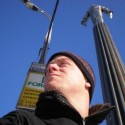Athletic participation is overwhelmingly positive for girls and women, but it is not without risk. Many female runners — and other female athletes — don’t eat enough given how much they exercise. The motivations driving this underfueling are complex and range from short-term improvements in performance to societal pressures on women to be thin. In the long run, underfueling causes a host of health complications that may end seasons or athletic careers. Many girls and women will do lasting damage to their bodies. The issue has gotten increasing attention over the last few years as professional and collegiate runners have shared their experiences with the condition, known as Relative Energy Deficiency in Sport (RED-S). The conversation has largely overlooked the middle- and high-school aged girls who are also affected, however. Doctors and researchers are now in a race of their own to understand RED-S and keep young female runners healthy and performing at the top of their game.
Anna Blaustein
Anna Blaustein discovered her passion for science writing while harvesting mussels before dawn for a writing assignment at Bowdoin College. Equipped with a notebook, a pen, and foul weather gear, she realized science writing combined her interests in storytelling, science, and adventure.
Her coursework has taken her from the Bay of Fundy to Baja, California. She’s analyzed water samples from Icelandic fjords and studied plant physiology in the American Southwest. At the Arnold Arboretum, she studied how climate change affects grain quality—research which became her honors thesis. Most recently, she’s been communicating public health information as a Massachusetts Contact Tracer.
Anna seeks stories about the intersections of science and society, and her work reveals how research and data relate to the human experience. She hopes to use storytelling to bridge the divide between science and public understanding and to help people connect with each other and the world we share.




